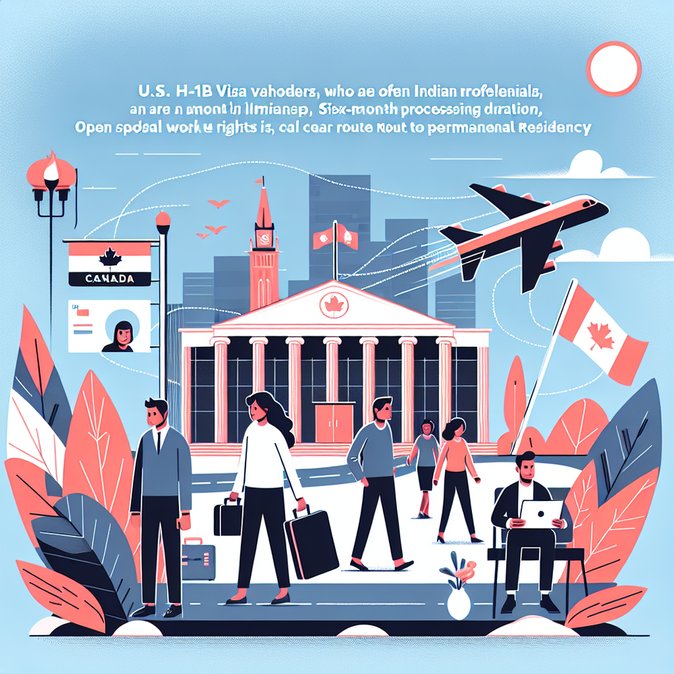
Facing persistent talent shortages in advanced industries, Canada used its 2025 Federal Budget framework to launch a dedicated fast-track pathway for foreign professionals currently on U.S. H-1B visas. Announced on 6 November 2025, the scheme promises streamlined work permits and a direct route to permanent residency in under six months for applicants with STEM or healthcare expertise.
Indian nationals—who form the largest H-1B cohort in the United States—stand to benefit most. Ottawa estimates that up to 15,000 Indian tech and biotech workers may shift north over the next two years, bolstering innovation clusters in Ontario, British Columbia and Alberta. The programme waives Labour Market Impact Assessments, offers open work permits for spouses and provides study-permit privileges for dependants, making it a compelling alternative for families frustrated by U.S. green-card backlogs.
![Canada Unveils Fast-Track Immigration Stream for H-1B Holders, Targets Highly-Skilled Indians in U.S.]()
Companies with Canadian entities can leverage the stream to relocate critical talent from U.S. campuses without lengthy intra-company transfer filings. Immigration lawyers advise employers to prepare Canadian prevailing-wage documentation and to book up-front medical exams to avoid processing delays.
The move intensifies North America’s ‘talent tug-of-war’. U.S. employers may need to sweeten retention packages, while India’s IT majors could use the policy to expand near-shore delivery centres for U.S. clients in Toronto, Waterloo and Calgary. The first application window opens 2 January 2026; demand is expected to exceed the programme’s 25,000-slot annual cap.
Indian nationals—who form the largest H-1B cohort in the United States—stand to benefit most. Ottawa estimates that up to 15,000 Indian tech and biotech workers may shift north over the next two years, bolstering innovation clusters in Ontario, British Columbia and Alberta. The programme waives Labour Market Impact Assessments, offers open work permits for spouses and provides study-permit privileges for dependants, making it a compelling alternative for families frustrated by U.S. green-card backlogs.

Companies with Canadian entities can leverage the stream to relocate critical talent from U.S. campuses without lengthy intra-company transfer filings. Immigration lawyers advise employers to prepare Canadian prevailing-wage documentation and to book up-front medical exams to avoid processing delays.
The move intensifies North America’s ‘talent tug-of-war’. U.S. employers may need to sweeten retention packages, while India’s IT majors could use the policy to expand near-shore delivery centres for U.S. clients in Toronto, Waterloo and Calgary. The first application window opens 2 January 2026; demand is expected to exceed the programme’s 25,000-slot annual cap.












